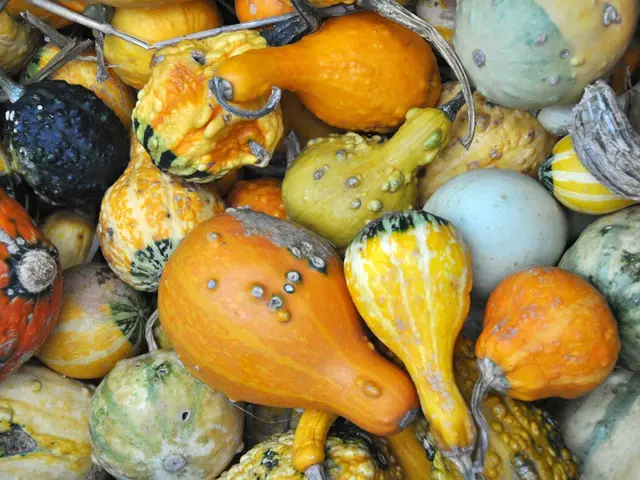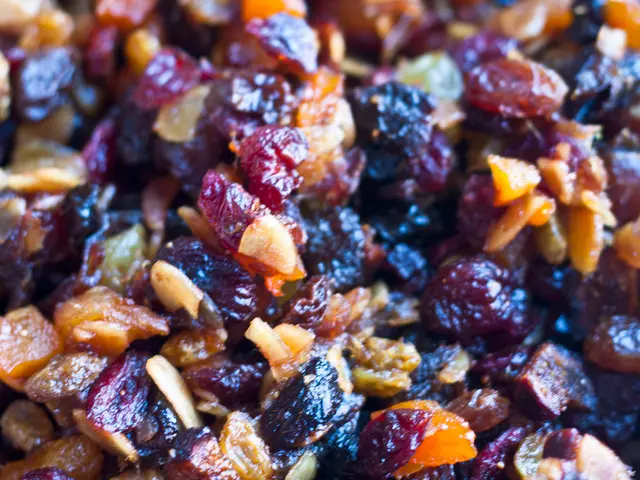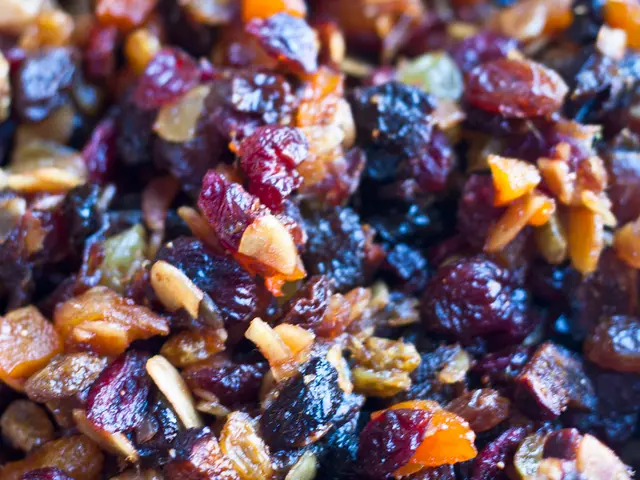Steps for Drying a Sourdough Starter
Guide to Blazing Fast Sourdough Bread Using a Dehydrated Starter
Say goodbye to waiting for days with this lightning-fast guide to sourdough bread, perfect for those who can't stand the anticipation! Using a dehydrated sourdough starter, we'll get you baking sooner than ever.
What's a Dehydrated Sourdough Starter?
It's still that delightful mix of flour and water, but it's been dried out and packed up, ready to be activated in a jiffy. No more waiting 7 to 10 days! You'll have a killer sourdough culture for your bread-making needs in no time.
Each kind of microorganism requires unique care. By feeding your sourdough with flour and water, you fuel these critters and ensure a healthier, successful fermentation process.
Sourdough provides a healthy environment for your bread-baking journey! During fermentation, it acidifies, helping to create the perfect colony of yeast and bacteria for bread-making while eliminating pesky bad bacteria.
Baking in a Flash with Your Dehydrated Starter
Getting from dehydrated starter to bread-worthy sourdough only requires 4 to 5 easy steps:
- Day 1: Activate your dried starter and Feeding #1
- Subsequent Days: Regular feedings
- Harvest your sourdough and get baking!
Before You Dive In
Here are some things to consider before you start:
- Containers: Use large containers (twice the sourdough volume) with a clean lid or cloth to cover.
- Utensils: A chopstick (or long fork) for mixing, a rubber band to monitor growth, a kitchen scale (for precision), and good quality, chlorine-free water to purify.
- Flour: Go for rye or wholemeal wheat, and if you're feeling experimental, give other flours (like buckwheat, spelt, or gluten-free) a try.
- Temperature: Make sure your water and room temperature are within 20–35°C. Below 20°C slows down growth, while above 35°C could be disastrous.
Kickstart Your Dehydrated Sourdough (aka Dried Starter)
No ratings yet Print Recipe Pin Recipe
What you'll need:
- 2 500 ml glass containers with lids
- 1 chopstick
- 1 Elastic band
- 1 Kitchen scale
- 1 sachet dehydrated sourdough
- Lukewarm water
- Flour
Steps:
Rehydration
- Pour the dried sourdough starter into a container.
- Add 30g lukewarm water (2 tbsp.).
- Stir for 1 minute.
- Wait for 15 minutes.
Feeding #1
- Add 30g flour (3 tbsp.).
- Add 30g lukewarm water (2 tbsp.).
- Mix for 1 minute, cover, and mark the height with a rubber band.
- Leave it 24 hours in a warm place.
Subsequent Feedings
- Mix the sourdough.
- Pour 90 g of sourdough (7 tbsp.) into a new container.
- Set aside any extra ("discard").
- Add 90 g flour (9 tbsp.).
- Add 70 g of lukewarm water (5 tbsp.).
- Mix for 1 minute, cover, and mark the height with a rubber band.
- Leave it 24 hours in a warm place.
When to Scoop Your Sourdough?
You'll know your sourdough is ready when it has a foamy texture, floats in water, and has a tangy, appetizing aroma.
Making Your First Loaf: Sourdough Bread Recipe
No ratings yet Print Recipe Pin Recipe
For this quick sourdough bread recipe, you'll need:
- 1 Large bowl
- 1 Cloth or plastic wrap
- 1 Cast iron casserole, pizza stone, or baking tray
- Kitchen scale
- 500 g unbleached wheat flour
- 350 g water
- 10 g salt
- 10 g sourdough
Steps:
- Mix flour, salt, starter, and water in a large bowl, kneading until smooth (2–3 minutes).
- Cover and let rest for 30 minutes.
- Fold (flaps) the dough for elasticity (2 flaps equal 2 bowl turns).
- Let ferment for 12 to 16 hours at room temperature.
- Shape your dough (round, baguette, etc.).
- Let dough rise for 45 minutes to 1 hour.
- Preheat oven to 485°F (250°C), preheat casserole dish, stone, or baking tray.
- Bake for 20 minutes, reduce temperature to 400°F (205°C), then remove casserole lid (or continue baking without steam).
- Let it cool at least 45 minutes before serving.
More Questions?
Check out our FAQ for tips on preventing discard, making gluten-free bread, and more sourdough secrets!
Happy bread-making!
Enrichment Data:To achieve lightning-fast sourdough, immerse the dehydrated starter in water, activate it, and ensure it's hungry with frequent feeds. For quicker bread-making, include a touch of commercial yeast to ramp up the rise.
Accelerate the reactivation process by activating the starter in a warm environment (24–28°C / 75–82°F) instead of a cooler one, and feed it multiple times if necessary. Enjoy the amazing taste of sourdough bread in just a few short hours with convenience in mind!
- Since you're diving into sourdough baking, consider incorporating health-and-wellness practices. Opt for wholegrain flours and combine your baking sessions with fitness-and-exercise activities like jogging or yoga.
- As you progress in your bread-making journey, explore nutrition-focused recipes. Experiment with healthy cooking methods like steam-baking or using olive oil instead of butter to reduce fat.
- After mastering the basic sourdough recipe, level up your culinary skills with advanced techniques like adding fruits or nuts for unique flavors, thus bringing a twist to your food-and-drink experience.
- To complement your sourdough lifestyle, delve into the world of science. Investigate the microorganisms used in your baking process and learn more about their role in healthy-cooking and food-and-drink evolution.








